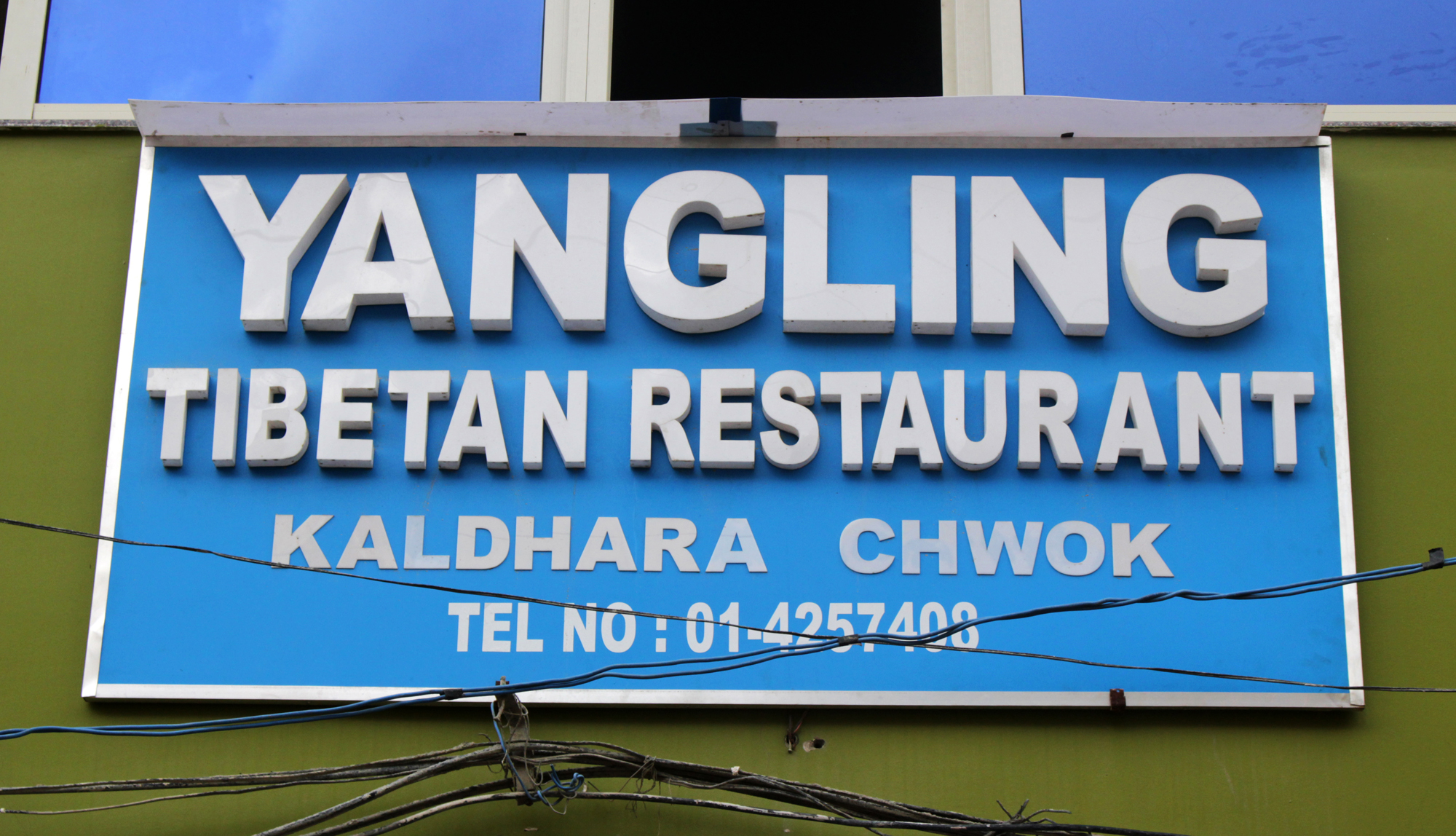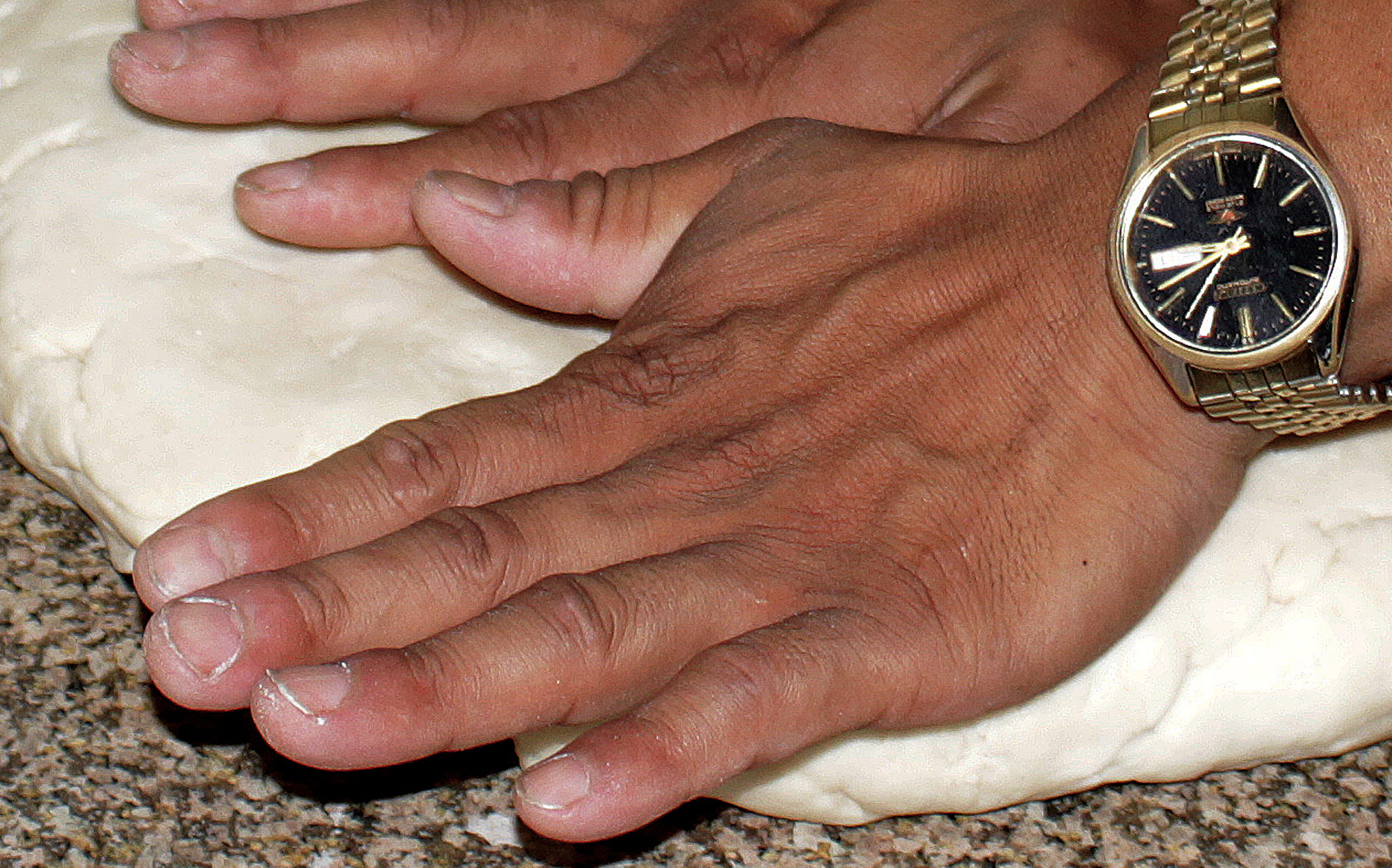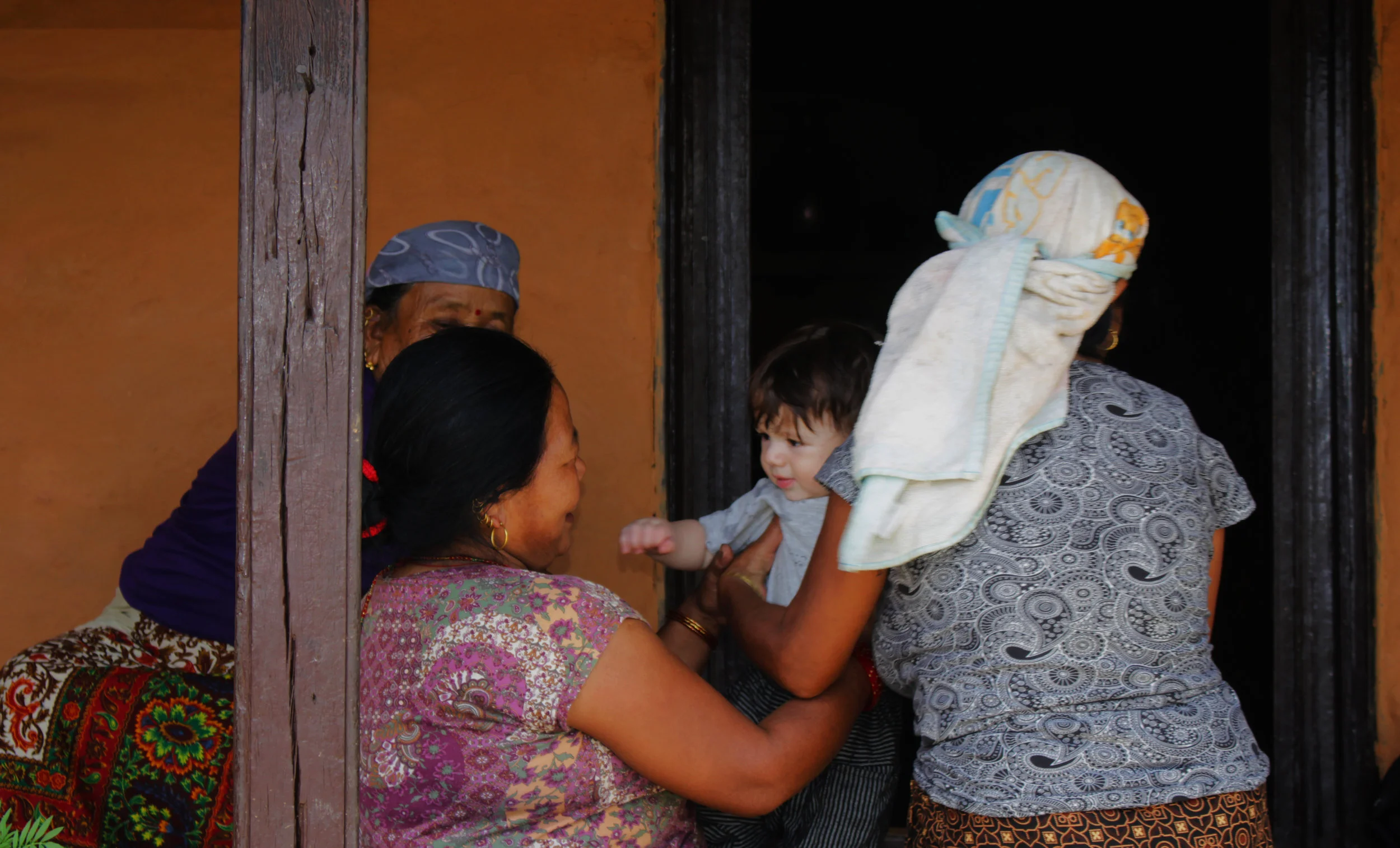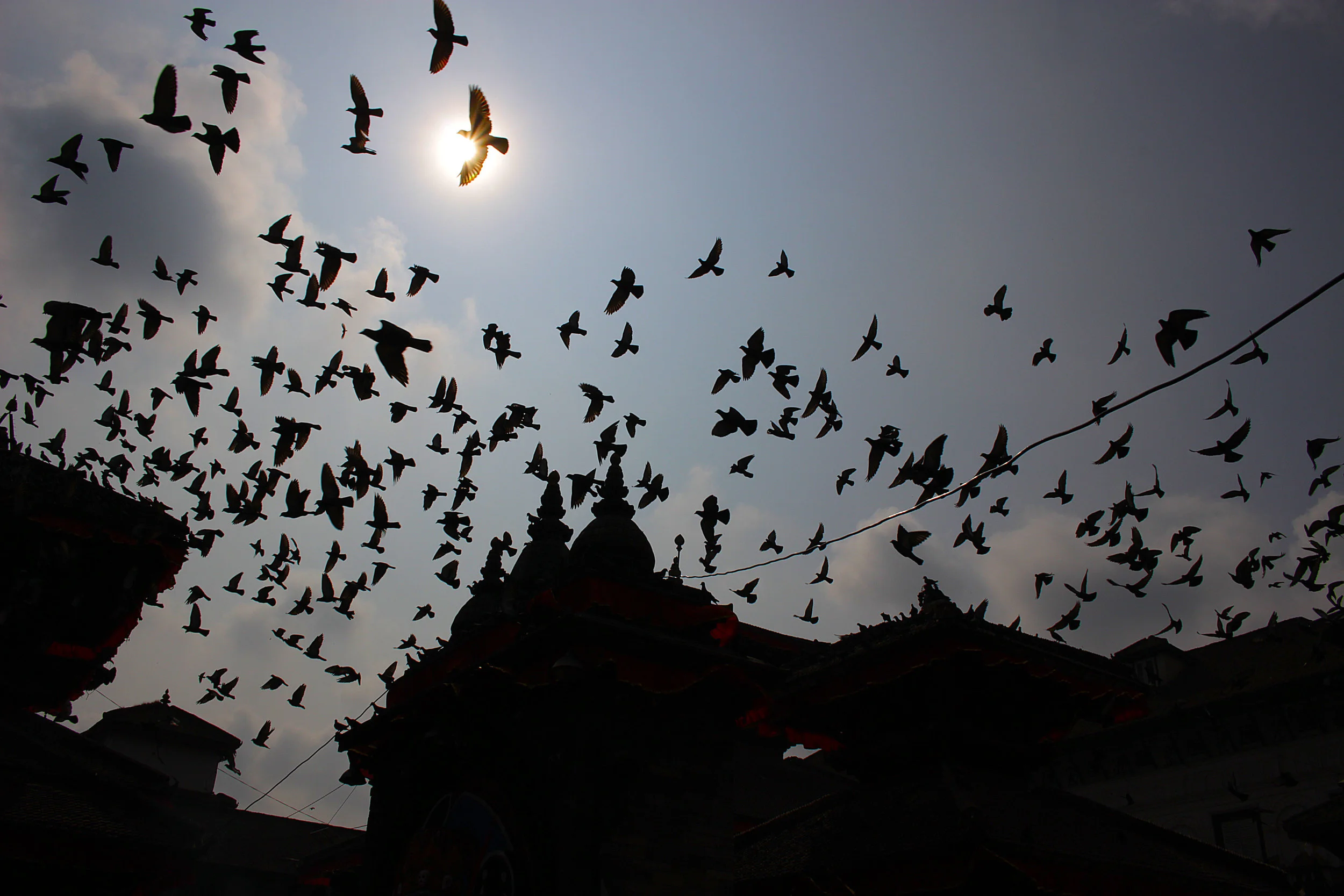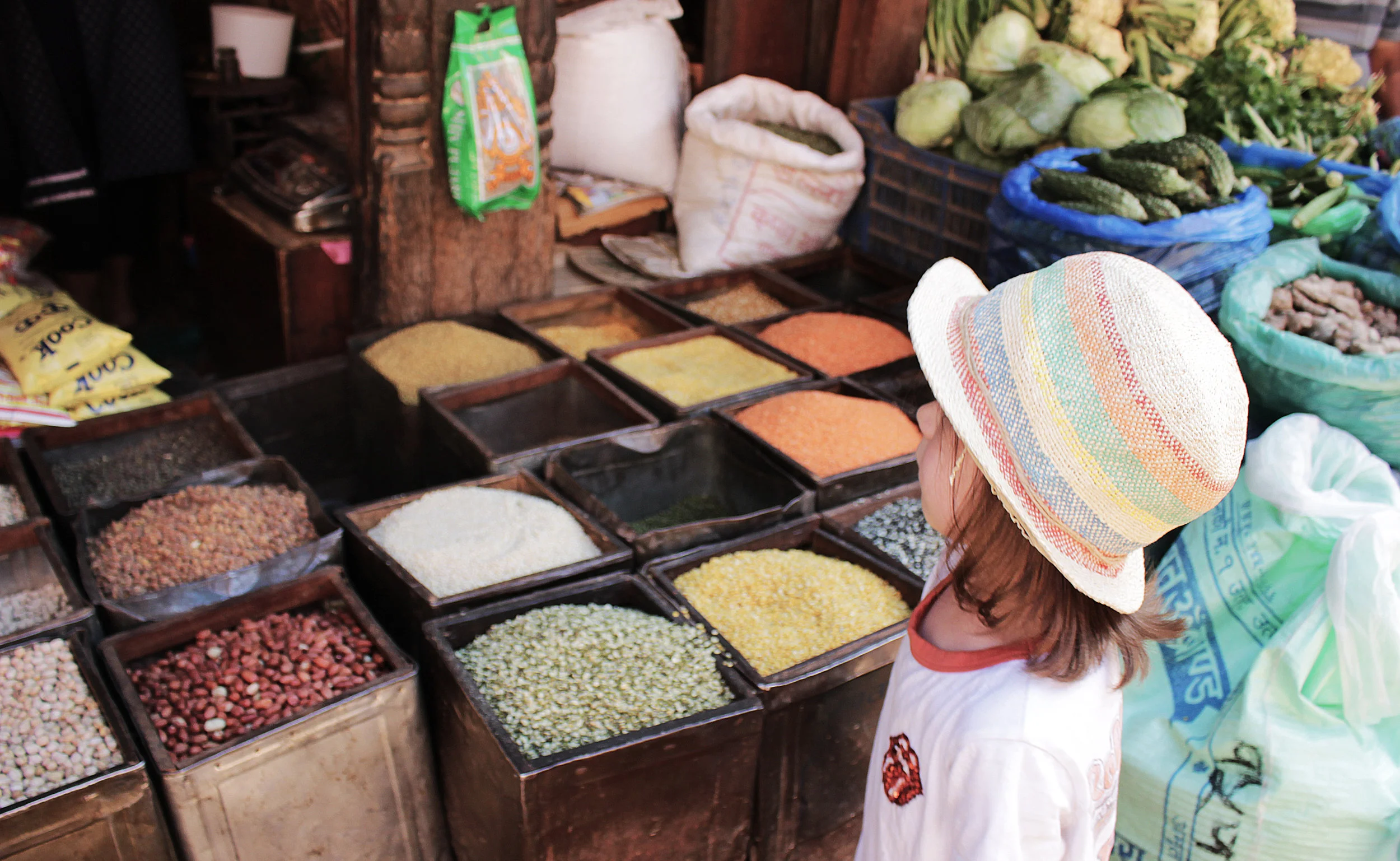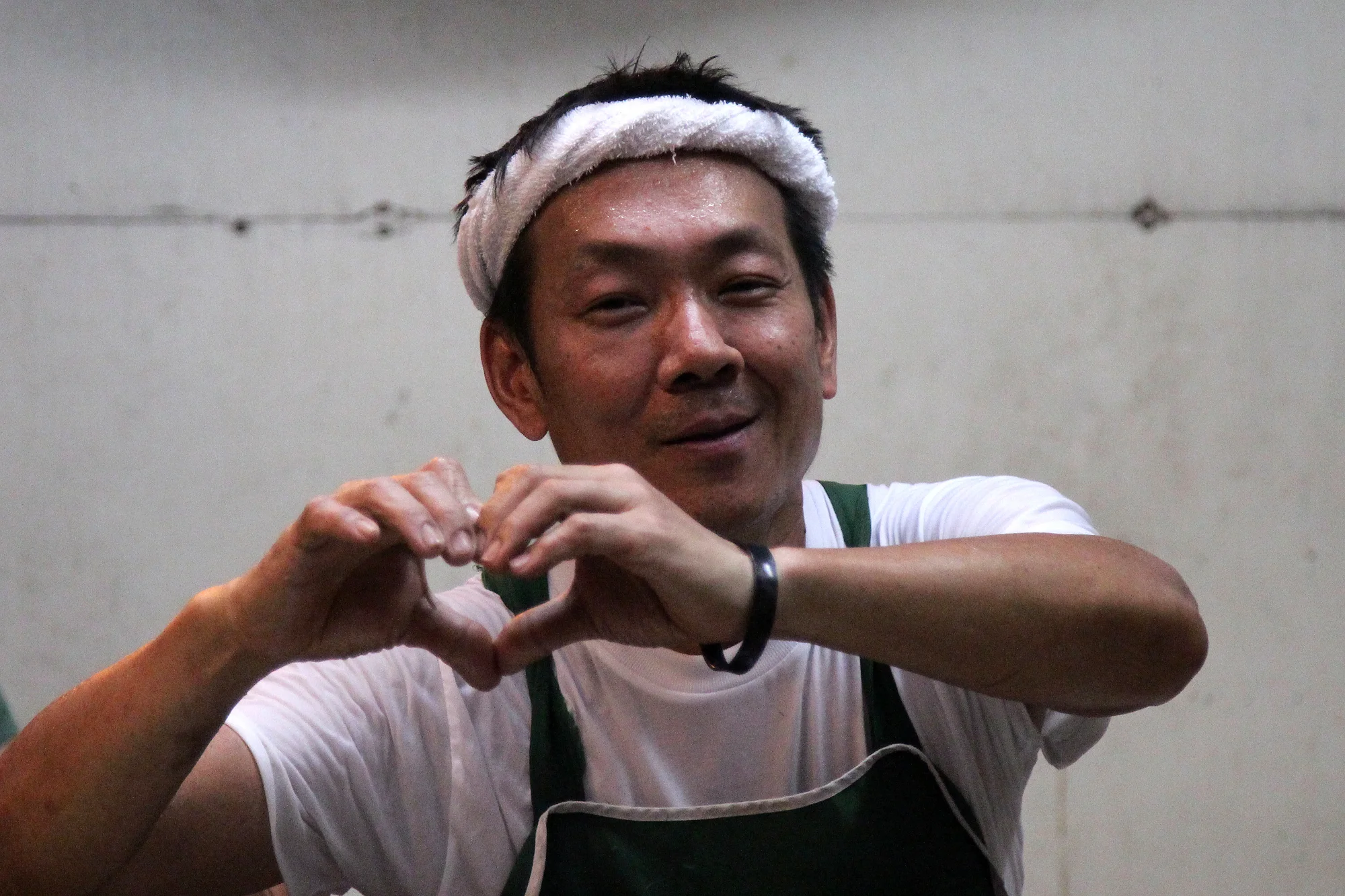Fast food, Kathmandu style.

Across the world, giant grins spread across dimpled cheeks, velcro-trainered feet start to jump and little eyes dilate at the thought of it. Fast-food, in all it’s deep-fried, salt-dusted glory, is the guilty pleasure of the world. And there are no better customers for it more than kids: they crave it, they beg for it, they actually bloody eat it. Whether it’s a messy fold of pizza al taglio in Rome, oozing quesadillas in Mexico or an aptly-named Happy Meal pretty much anywhere, there is always some kind of fast food that children will drive their parents mad for.
“In Kathmandu, it’s momos. When children go out here, they want momos. Momos momos momos!” declares Lakpa Sherpa, grinning at us across the table on the top floor of his Thamel eatery, Yangling Tibetan Restaurant. We first came here a couple of days into our big adventure. Thrown by the dust and the mayhem of Kathmandu, we did some research and dragged our jet-lagged kids down a darkish street filled with real characters and shuttered shops.
Hell, we’re glad we did. Yangling is a no-nonsense kind of a place. Simple, bright, clean (not always the case in the capital) and it does one thing very, very well. Sure, there might be the odd accessory on the menu, the occasional papad or chilli fries or thukpa, the buttery Tibetan noodle soup. But we were here for the momos.
We keep joking that every country has its dumpling, but it’s true. England has its suet pillows, ready to soak up a hearty stew. Japan has its deeply savoury gyoza. China, its jewel-like dim sum. And Nepal, its momos. Expertly crimped, pinched parcels of translucent dough filled with all sorts of happiness, then steamed, fried or cooked kotthey, a pan-fried hybrid of the two. The filling can be anything from delicately spiced chicken to spinach and paneer, or something altogether stronger. Boom. A plate landed in front of us. There was nothing subtle about this. River had been happily kidnapped by Lakpa’s sister-in-law, Olivia had fallen asleep in her omelette, and we had a plate of chilli pork momos to destroy. This was our night.
Here, chilli momos are fried, not to a solid shell, but a thin crisp exterior that sits under a layer of sweet, hot sauce which sticks to the purplish petals of onion and ubiquitous green peppers. Inside, a small ball of heavily spiced pork delivers the savoury hit. Simultaneously comforting, alarming and addictive, it’s the kind of dish you go back to a place for. So we did.
Lakpa Sherpa turns out to be one of the world’s nicest, most humble men, as well as the maker of the city’s best momos, and he agreed to a chat and a backstage glimpse inside his wonderful dumpling factory of a kitchen.
Growing up in a Sherpa family in a village very close to Mount Everest, Lakpa ate momos. A lot of them. They were mostly vegetable-filled, as his Buddhist community didn’t kill any animals, hence meat was hard to come by. And the market, at any rate, was a long journey away, so vegetables it was. His love for momos had started young, and years later, when he decided to start his own restaurant, it was clear what its speciality should be.
Yangling Tibetan Restaurant started out very small in 1992. They then moved to larger premises for the next twelve years, but the 2015 earthquake shook the building they were in and Lakpa no longer felt safe there with his family. After all, Yangling is very much a family business. He works with his wife, his son, his sister-in-law and a few other relatives, which is crucial to the success of the business. It means that there is always someone present who he can trust. And it’s clear they still love each other dearly, despite the stresses that restaurant ownership inevitably brings.
After the earthquake scare, Lakpa thought it would be better to build his own place, and so here they are, five months into their new home and a lot safer. He tells us that another opening in nearby Chhetrapati is on the cards, and so, it seems, the momo business is booming.
The locals go for the steamed dumplings, apparently. And the tourists go for the chilli momos, which Lakpa describes kindly as a toned-down and less spicy version of the original, designed for the ‘Western palate’. So, I guess that makes us both predictable and a bit pathetic, as they still manage to blow our heads off and necessitate a few litres of water. But God, they’re delicious.
Lakpa, refreshingly, has a great philosophy for Yangling. “Most restaurants want to charge more and more. One item of food is supposed to have a 250% charge. It’s too high. I want to sell quality food at a good price. Everybody needs to eat food.”
He gives us a tour of the small kitchen, where a team are quietly creating a mountain of momos. We see the dough, which is uncannily similar to the recipe for pasta, being flattened out with metal rolling pins, then stuffed with the minced pork and deftly formed into parcels. The family watches in a mixture of excitement and bemusement at the attention we’re paying them. Olivia, herself a master of making ‘ravioli’ from her Play Doh is taught to make her first momo, her little novice hands inside Lakpa’s expert ones. She holds her dumpling up proudly to a smattering of applause from her audience. It’s her first ever cooking class and she’s delighted.
The size of the momos varies. “We don’t have any measuring things” Lakpa says with a sheepish smile. This is cooking based on instinct, not measuring spoons or science. And the ingredients are equally genuine. “We buy the best quality fresh meat from the market, and we clean it, we throw the bad things away, then we mince it ourselves. We don’t buy mince. There’s less fat and you know exactly what’s inside. “
We talk Kathmandu, and he tells us how much he’s seen the capital change over the past few years. It’s obviously not the easiest city to live in right now as he speaks of the pollution, the unfinished roads and the clean water project that has yet to be completed. “It’s a cultural issue, and it’s a big problem. Here, they do something, they start something, and it takes time.They make a plan but they don’t actually finish it.”
But Kathmandu is home now, and he is more than able to rise above the problems, maintaining his own modest bubble of calm. His favourite place to eat is his own home, though he might venture out to Himalayan Java for a coffee. He’s running a wildly popular restaurant without the usual histrionics, and he’s surrounded by a family who love him. Life seems pretty good for Lakpa.
As we finish our tour and our talk, his son pops by. Twenty-three years old, he helps out in the restaurant but is staying in Kathmandu to study for his masters degree, despite his father’s insistence he should venture abroad. Given most young people’s desire to flee the family nest as soon as possible, this is rather sweet and testament to what a nice guy Lakpa is. Or maybe, just maybe, he’s staying for the momos. We certainly would.
Yangling Tibetan Restaurant
Kaldhara Marg, Kathmandu 44600, Nepal
Phone: +977 1-4257408
Open daily 12 to 9pm
Sunday closed


